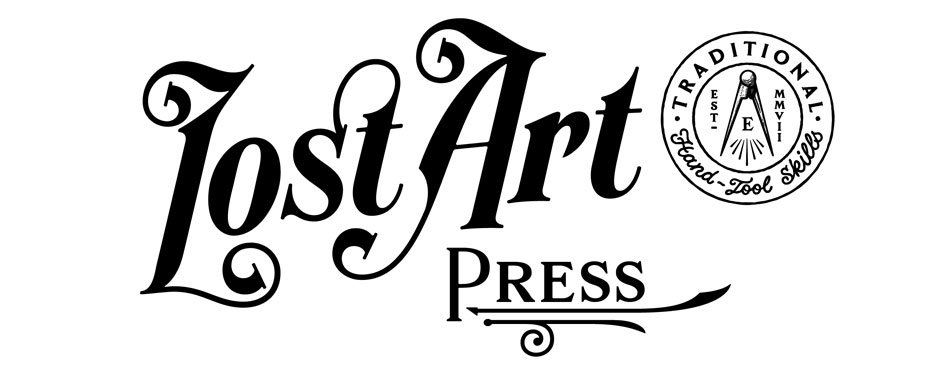At the first Handworks in 2013, I overheard a funny conversation about my credentials. I was standing in the Lost Art Press booth with my back to a bunch of bearded fellows who were debating the fine points of workbenches.
Beard No. 1: Chris Schwartz says that….
Beard No. 2: Shwatz is just a journalist. He’s not a professional woodworker, so he doesn’t know what he’s talking about.
Chat closed.
I know that Beardy No. 2 was insulting me by saying I’m “just a journalist,” but to me it was anything but. I am – unapologetically – a journalist. I trained to be a newspaperman at Northwestern University’s Medill School of Journalism and am proud I survived the school’s bloodletting process. I then received my masters in journalism from Ohio State University, which is where I learned about Noam Chomsky and American anarchism.
Like it or not, Lost Art Press wouldn’t exist without my training from these two journalism schools.
While it’s unpopular to be a journalist these days, I didn’t enroll in journalism school to become rich and universally loved. Instead, I decided in 8th grade to become a journalist because I think – scratch that, I believe – there should be voices who are independent of the government, mega-corporations and churches.
Of course, when you work as a corporate journalist for reals, you learn that you are an underpaid and overworked tool of all three institutions – unless you can plot an escape that doesn’t involve public relations. And that you need to live low to the ground. And be happy with a small audience.
So everything you love (or hate) about this blog is a result of my training. We don’t take free tools, advertising, sponsorship, affiliate status or Dick Butkus thanks to every moment I spent in my Law & Ethics class at Northwestern. I learned the value of document research in Investigative Journalism. I fell in love with history in the History of Journalism.
But wait, let’s go back to Beardy No. 2. Shouldn’t I be insulted by the fact that he said I’m not a “professional woodworker?”
Well, no. I’ve met a lot of professional woodworkers in the last 25 years, from Sam Maloof on down to the guy who just got a job making particleboard cabinets with a narrow-crown stapler. Just because you make a living from working wood doesn’t mean you have superpowers (anymore than being a journalist gives you a monopoly on the truth).
In the end, I hope to be judged by the work I leave behind. That includes the words, the furniture I build and the ideas that I’ll share with anyone who will listen.
And if you got to this point in the story then that might just be you.
— Christopher Schwarz



 During my final year of teaching, I had three distressing encounters with teenagers in my classes and lectures. At the end of the event, the teens came up and said: “I want to be you when I grow up.” And then they asked a terrifying question: “How do I get to where you are?”
During my final year of teaching, I had three distressing encounters with teenagers in my classes and lectures. At the end of the event, the teens came up and said: “I want to be you when I grow up.” And then they asked a terrifying question: “How do I get to where you are?”


